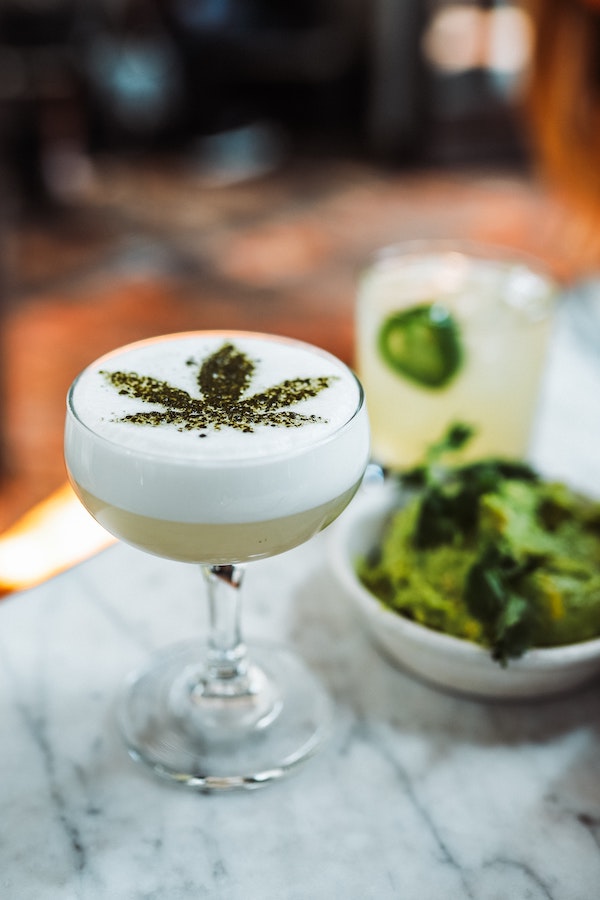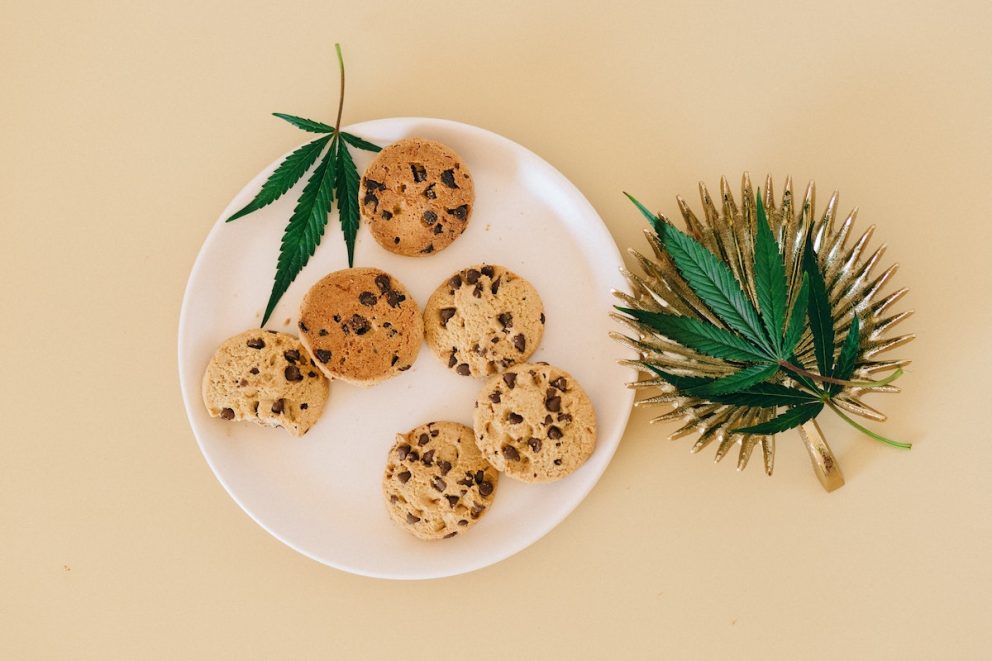Can You Eat Weed? What is an Edible? And More FAQs About How to Make Edibles for Beginners
Photo by Nataliya Vaitkevich
The cannabis craze is far from over with only about 4 states that do not have at least some form of legalized cannabinoid on the market or access to medical marijuana. Now, this doesn’t mean everyone is keen to be smoking joints for their health or ready to take the plunge into doing dabs. Edibles are a great way to dose that encourage the homeopathic benefits of cannabis.
Can you eat weed, as it is, and still get all of the benefits? Some beginners may think the ingredients in edibles are only meant to mask the taste or smell. There’s actually a fair amount of chemistry involved in converting cannabinoids, the medicinal compounds of medical marijuana, into a form your body can process.
Not to mention, fats are required to help these compounds more readily get absorbed by your body. Plus, the cooking of edibles is vital for your body to use these cannabinoids. You could eat pounds of raw cannabis and potentially not feel a thing.
Cannabinoids need to be heated, oils and fats make the best delivery system, and edible dosing is also important to avoid getting too high. This article will provide you with a full understanding of edibles, how they work, how they interact with your body and even a few tips and recipes for making your own homemade edibles. Not to mention how to properly dose because the effects of edibles can be very different.
Bon appetit!
Can You Eat Weed?
If you’re completely new to cannabis you may not know that you can consume cannabis orally. The issue is you cannot just take raw weed flower and eat it. You could, you just would not feel the psychoactive effects of THC and miss out on some of the medicinal benefits of CBD.
Unlike psilocybin (magic mushrooms) which you can eat raw then feel their effects, cannabis requires some treatment, mostly heat, before the cannabinoids are activated and can interact with your body.
Cannabis has over 100 cannabinoids that can all interact with the human endocannabinoid system, a division of our nervous system that governs certain body functions. The issue is that in the plant, these exist as acids that are not broken down the same way by the human body.
When heated, these acids become decarboxylated and this chemical process converts them into cannabinoids like THC, CBD, and CBG. They essentially become more bioavailable when heated. This is why you need to smoke cannabis or cook it into an edible to feel the high of THC. CBDA is also not as effective a cannabinoid as CBD.
There’s nothing inherently toxic in cannabis so you can eat it raw, you simply will not have the psychoactive effects you may be seeking. Raw cannabis can actually be good for you, there are some health benefits to consuming raw cannabis even without the high of THC or relaxing anti-inflammatory benefits of CBD.
Some people have been known to blend raw cannabis into smoothies or juice it because it is chock full of antioxidants, polyphenols and even some biological antibiotic compounds. Raw cannabis is high in Vitamin K, Vitamin C, Iron, Calcium, and Folate. It also contains a lot of fiber and some proteins and amino acids.
There have been studies that have shown the health benefits of THCA, the precursor to THC, including potential neurological benefits of being an anticonvulsant, helpful in therapy for Huntington disease, and even helpful in cancer treatment.
Additionally CBDA, which becomes CBD, has shown potential anti-inflammatory, antiemetic, anti-convulsant, and anti-cancerogenic properties and the potential for new drugs utilizing this acid is promising. There’s still growing research into the full scope of the natural ingredients in cannabis.
Can Eating Weed Get You High?
You can eat a whole gram of raw weed and potentially feel nothing at all. The reason, when unheated, the acid form of many cannabinoids do not interact with your body in the same way. Think of cannabinoids like little keys. When they’re decarbed, they can enter into CB1 and CB2 receptors which exist in our endocannabinoid system.
These cannabinoids can turn up or down certain body functions like relaxation, hunger, energy production, and inflammation. Without being heated many of these compounds simply do not engage with the endocannabinoid system in the same way. While the full benefits of the cannabis plant are still being studied, most turn to weed for the high.
The driving force behind medical and recreational marijuana is the benefits of THC and the potential market for people seeking to get high. For example, dronabinol is a synthetic form of THC created by pharmaceutical companies. Products featuring copycat cannabinoids delta-8 and delta-10 are popping to offer a high similar to THC.
Realistically, eating cannabis to get high requires the creation of edibles. These often fatty snacks help provide a vehicle for cannabinoids to travel through your body. The reason edibles tend to be fattier foods like cookies and cakes is that cannabinoids, THC especially, are oil soluble.
When cannabinoids combine with oil they can more easily get absorbed as your body digests the oil. The THC getting metabolized by your body is what gets you high.
Why Do Edibles Need Fats?
Cannabinoids like THC and CBD are fat soluble, which means they attach to fatty acids. Water soluble compounds dissolve in water which is why you might take a medication or vitamin with water. When they dissolve and combine with water the ingredients become available to your body as it absorbs the water.
Similarly, THC, CBD, and other cannabinoids hitch to fats and then circulate throughout your body as your body digests those fats. With edibles, unlike smoking, THC can be absorbed throughout the digestive process. Scientific studies have shown when cannabinoids are attached to fats like milk, butter, or oil, they increase your exposure.
As soon as you begin chewing your body can begin absorbing cannabinoids under your tongue. Your body will also convert THC into 11-hydroxy-THC in the liver. This is a compound your body creates when it’s metabolizing THC.
Cannabinoid-bonded fats provide the perfect transport for cannabinoids allowing you to absorb them even late in the digestion process. Another major point of entry is intestinal lymphatic transport. Cannabinoid-bonded fats can get absorbed by your intestines then travel throughout the body through lymph.
Your body’s relationship to fat-bonded cannabinoids as well as how it’s converted in the liver is partly why the high of edibles can be different from the high of smoking.

Photo by Elsa Olofsson
Types of Edibles
There are multiple types of edibles on the market. In areas where cannabis is legal, the sky’s the limit as cannabis restaurants, cafes, and bakeries are cropping up to offer people cannabis-based versions of their favorite foods.
The only limit to edibles is they require some sort of oil or fat. You need to be able to get cannabinoids into your recipe. Some common ways to add cannabinoids to recipes are cannabis based oils, butter, or other fats.
Cannabutter is a common starter ingredient for edibles. As often as you use butter in your favorite foods, snacks, and desserts you can convert them into edibles with cannabutter. Check out this easy cannabutter recipe.
Cannaoil is a simple way to convert your favorite cooking oil into an edible. It’s easy to make cannaoil, this post has simple instructions for making cannaoil. Any oil can become cannaoil but some are better than others.
You can also make THC syrup for sweeter treats or you want to quickly dose without having to swallow a spoonful of oil or butter. It’s easy to make THC syrup.
Common edibles tend to be higher fat snacks like cookies, cakes, and brownies which are often made with cannabutter or cannoli. Edibles are also often available in candies which are easy to dose so you can find gummies, hard candies, and even breath mints.
Apply for a Medical Marijuana Card Online Today
Join over 100,000 patients who have chosen Green Health Docs as their medical cannabis doctors. We have a 99% approval rate and offer a 100% money back guarantee!
Smoking vs Edibles
There are a few different ways to smoke weed from joints to bongs to dabs to vapes. These can vary in their strategy but the delivery is inhaling heated cannabinoids. This gives you instant access to cannabinoids that have been decarboxylated.
Smoking offers an instant high. Smoking helps you better pace yourself, the results are instant, and it takes less time for your body to metabolize the THC. So you can have the full experience of cannabinoids and the experience fades.
With edibles, your body creates a different form of THC, not to mention you have potential access to a different blend of cannabinoids and terpenes. Your body can also access these compounds throughout the digestion process.
These multiple points of entry for edibles is why the high can feel delayed at first then escalate over time. This cascading effect is the various cannabinoids interacting with your body and more THC “hitting” throughout digestion.
With smoking, you get a quick,full understanding of how high you’ll be. With edibles, cannabinoids can enter your bloodstream at different times during the digestive process. This is why your highs can vary.
The highs from edibles can last as long as 24 to 48 hours depending on how much you consume. That being said, there are benefits to edibles.
Benefits of Edibles
There are many benefits to edibles. Making edibles can give you more bang for your buck than smoking. Smoking isn’t always the most effective way to get your cannabinoids. For example, smoking a joint can potentially waste flower as some of it burns when you’re not inhaling.
With edibles, you collect as many cannabinoids as you can into your fats. Your body also absorbs THC and cannabinoids throughout digestion. Your metabolization, and your high, can last longer meaning you have more exposure to cannabinoids.
Edibles expose you to less carcinogens than smoking. While weed is not the same as tobacco the smoking process exposes you to more cancer-causing chemicals. With edibles, you’re consuming only the cannabinoids in fats, so you’re only ingesting the healthy compounds.
The 11-hydroxy-THC your body creates the liver is unique to edibles. This is why the “high” of edibles can feel differently even to hardcore stoners. 11-hydroxy-THC is a compound that is only created by the human body. You may prefer the experience to traditional THC.
11-hydroxy-THC can affect you differently. This is why you might feel paranoid with edibles or smoking but not the other. It’s good to get a feel for what your body prefers more. With edibles, your high can also compound over time.
Edibles also offer more discretion and access to more cannabinoids without putting your health at risk. Smoking can never really be described as healthy. Edibles help you focus on the medicinal properties of marijuana. You can have a high or low THC edible without having to resort to dabs, crystalline, or moon rocks you may need to resort to when smoking.
Also, some edibles available on the market let you more properly dose. You may not know how smoking will affect you but you can take a small or even microdose of cannabinoids with edibles. Cannabis products purchased at dispensaries require testing and clearly labeled dosages.
With edibles, over time, you can get a clearer picture of how much cannabis you’re consuming and how you’ll feel each time. Dosage is everything.
Dosage for Edibles
With edibles, it’s best to understand your doses. This helps give you a clearer picture for how high you’ll get, and additionally, how much of your edibles you want to take. Here’s a guide to common doses for edibles.
1-2.5 milligrams of THC would be considered a microdose. You will likely feel something but not become so overcome you cannot function. This is ideal for new users as you can get a feel for how edibles might make you feel to a subtler degree.
2.5 – 5 milligrams of THC is a standard dose. Many store-bought edibles offer doses at 2.5 or 5 milligrams. It’s a great starter dose that will offer some effects and let you know how you’ll enjoy THC and edibles.
10 – 20 milligrams of THC is a larger dose for experienced users. This is more than the standard dosage so you’ll want to prepare yourself. Experienced users who may have a higher tolerance may take this dosage to feel above average either for fun or to medicate.
20 – 40 milligrams of THC is a high dose. Experienced cannabis users may opt for a higher dose of edibles on average. This much THC will cause strong effects and can even potentially make you tired.
50 -100 milligrams of THC is a macrodose. This is a heavy dosage and should be considered only when directed by a doctor. While one can take this much THC and not be ill, you do run the risk of an intense high that can persist for a longer amount of time.
How Long Does it Take for Edibles to Kick In?
A few different factors can affect how long it takes for edibles to kick in. Also, their experience can change over time as more THC or cannabinoids can enter your bloodstream.
It will take at least 30 minutes to an hour to begin feeling the effects of edibles. You need to wait for the beginning of digestion, and again, cannabinoids get absorbed throughout digestion. Over time, you’ll get a full picture of how the edible has affected you.
How Long for Edibles to Hit on a Full Stomach?
Edibles, as their name suggests, rely on your digestion. A full stomach can compromise your ability to get access to THC and may undercut how much your body can absorb.
It will take longer for your body to digest an edible when your stomach is already full. Think of it like putting your edible on a waiting list. Your body must first properly digest what was in your stomach.
It’s only after your body has fully digested your meal that it can begin digesting your edible. The full contents of your stomach can also dilute the amount of cannabinoids that your body can digest.

Photo by Justin Aikin
How Long Do Edibles Last?
Edibles can last in your system for a few hours to as much as two days. That’s how long it will take for your body to fully metabolize the THC and other cannabinoids.
Edibles themselves can last as long as their contents do. Edibles don’t expire until their ingredients spoil or go bad. Cannabinoids can lose their efficacy in 6 months or more. Different aspects of edibles can cause THC to degrade and become CBN which is less psychoactive.
How Long Does an Edible Stay in Your System?
An edible will stay in your system for as long as it takes for your body to fully metabolize the cannabinoids. A high from edibles can last anywhere from a few hours to as long as 2 days.
There’s also the chance for trace elements from edibles to still be found in your body. Like with the oils in the edibles, cannabinoids can bond to the fats in your body. They can last anywhere from 3 to 12 days in your system. With drug testing, they can show up in urine for up to 30 days and hair up to 90.
With edibles it’s not quite an exact science. Again, there are more access points for your body to absorb the THC and more fat for them to linger.
How Long is Needed to Recover From Edibles?
Depending on your dosage, it can take some time for the edibles to fully digest and metabolize. After a few hours, you’ve likely fully felt the full effect of THC and how you’ll feel. Over time, the effects will fade.
With super high doses, it can take longer to metabolize and the high may linger. Two days is the longer side of highs from edibles.
Final Thoughts
Edibles offer a great way for you to ingest cannabinoids while avoiding the perils of smoking. They also give you ready, discreet access to your medication, and can offer more bang for your buck.
While they can affect the body differently, edibles offer you a clearer dosage and a better understanding of how they’ll affect you overall.
Try applying online for a medical marijuana card today to take full advantage of the holistic and health benefits of cannabis with edibles.
 This article has been reviewed by Dr. Anand Dugar, an anesthesiologist, pain medicine physician and the founder of Green Health Docs. Graduating from medical school in 2004 and residency in 2008, Dr. Dugar has been a licensed physician for almost 20 years and has been leading the push for medical cannabis nationwide.
This article has been reviewed by Dr. Anand Dugar, an anesthesiologist, pain medicine physician and the founder of Green Health Docs. Graduating from medical school in 2004 and residency in 2008, Dr. Dugar has been a licensed physician for almost 20 years and has been leading the push for medical cannabis nationwide.

